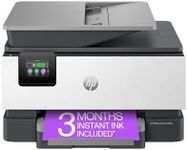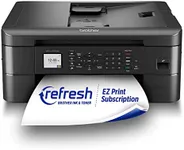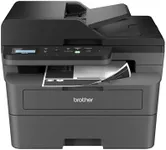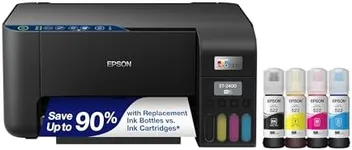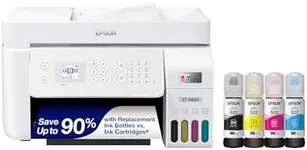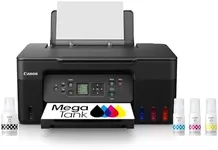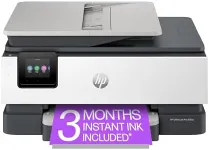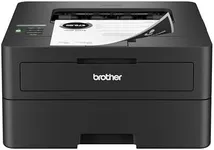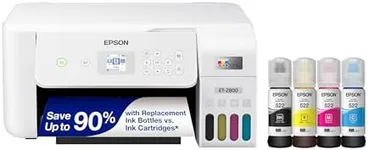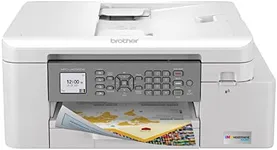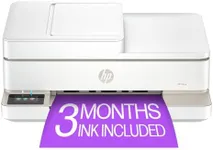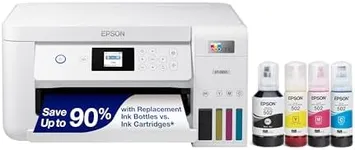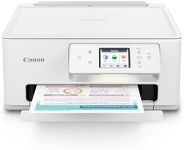Buying Guide for the Best Wifi Printers For Home Use
Choosing the right WiFi printer for home use can greatly enhance your printing experience by offering convenience, flexibility, and efficiency. When selecting a WiFi printer, it's important to consider several key specifications to ensure it meets your needs. Understanding these specifications will help you make an informed decision and find the best fit for your home printing requirements.Print TechnologyPrint technology refers to the method a printer uses to produce text and images on paper. The two main types are inkjet and laser printers. Inkjet printers are versatile and can handle a variety of print jobs, including high-quality photo printing, making them ideal for home use. Laser printers, on the other hand, are known for their speed and efficiency in printing large volumes of text documents. If you need to print a lot of documents quickly, a laser printer might be the better choice. Consider what types of documents you will be printing most often to determine which print technology suits your needs.
Print SpeedPrint speed is measured in pages per minute (PPM) and indicates how quickly a printer can produce printed pages. This is important if you frequently print large documents or need to print quickly. For home use, a print speed of 10-20 PPM is generally sufficient. If you have higher volume printing needs, look for a printer with a higher PPM. However, if you only print occasionally, a lower PPM may be acceptable and can save you money.
Print QualityPrint quality is measured in dots per inch (DPI) and determines the resolution and clarity of the printed output. Higher DPI values result in sharper and more detailed prints. For general home use, a DPI of 600x600 is usually adequate. If you plan to print high-quality photos or detailed graphics, consider a printer with a higher DPI, such as 1200x1200 or more. Assess your printing needs to decide the level of print quality required.
Connectivity OptionsConnectivity options refer to the various ways you can connect your printer to your devices. WiFi connectivity allows you to print wirelessly from multiple devices, which is convenient for home use. Some printers also offer additional connectivity options like USB, Ethernet, and Bluetooth. Ensure the printer supports the connectivity methods you prefer and check for compatibility with your devices. If you have a smart home setup, look for printers that support mobile printing apps and voice-activated printing.
Paper HandlingPaper handling refers to the types and sizes of paper a printer can accommodate, as well as its paper tray capacity. For home use, it's important to have a printer that can handle standard paper sizes (like A4 or letter) and possibly other media types like envelopes or photo paper. A larger paper tray capacity means less frequent refilling, which can be convenient if you print a lot. Consider your typical printing tasks and choose a printer with appropriate paper handling capabilities.
Duplex PrintingDuplex printing is the ability to print on both sides of a sheet of paper automatically. This feature can save paper and reduce printing costs. It's particularly useful if you print a lot of double-sided documents, such as reports or booklets. If you frequently need double-sided prints, look for a printer with automatic duplex printing. If this is not a common requirement for you, a printer without this feature may suffice.
Ink/Toner Cost and YieldInk or toner cost and yield refer to the price of replacement cartridges and the number of pages they can print before needing to be replaced. This is an important consideration for the long-term cost of owning a printer. Look for printers with affordable and high-yield cartridges to minimize ongoing expenses. If you print frequently, high-yield cartridges can be more cost-effective. Check the estimated cost per page to compare different models and choose one that fits your budget and printing volume.
Additional FeaturesAdditional features can enhance the functionality and convenience of your printer. Common features include scanning, copying, and faxing capabilities, which can be useful for a home office setup. Some printers also offer touchscreen controls, memory card slots, and cloud printing services. Consider which additional features are important to you and how they will benefit your home printing needs. Choose a printer that offers the right combination of features to match your requirements.
